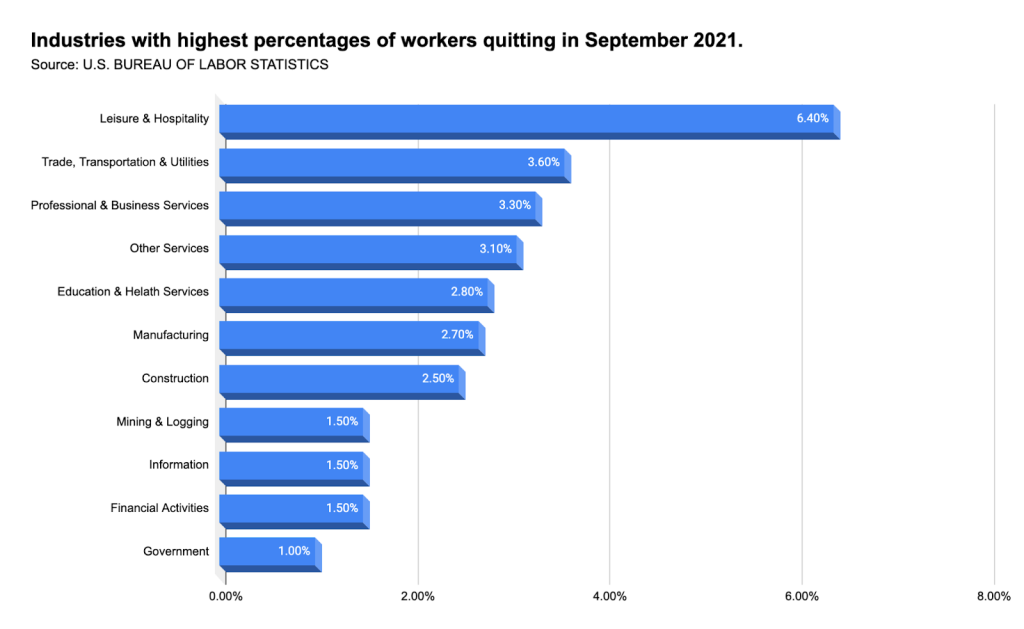A long time ago, in what seems like a galaxy far away, things were a lot more stable. Stable supply chains, stable prices, stable pools of labor. Pandemics, however, have a way of introducing volatility. In our current world, time seems to be moving faster than ever and it seems that the age of automation may be about to kick into a new gear. While new automation strategies pop up at an increasing pace with each one claiming to be the only hope, the same economic and social factors rise in opposition and derail even the most soundly justified and purposefully planned initiatives. In the wake of the Great Resignation, it appears that, despite the entrenched factors weighed against a deep enterprise commitment to implement hyperautomation, there may be a new option emerging that can avoid the obstacles of the past.
The friction and conflict enterprises face when attempting to get automation initiatives funded and to enroll enterprise workers in contributing to the transformation efforts has been both consistent and persistent. In short, automation initiatives typically are bottom-line initiatives rather than revenue-generating ones, which makes them unlikely to get funding and support before a crisis event. On the other side, no matter how much data you bring to the table, individual contributors (ICs) and middle management will seldom see the effort as anything beyond job elimination.
Once the impact of Great Resignation became understood outside of retail and food-service workers, I was reminded of an old Yiddish adage that translates to “Man plans, and God laughs.” Despite the best-laid strategy and plan, the future is inherently unpredictable. While this aphorism is usually reserved to describe the unforeseen obstacles that pop up, in this circumstance the emergence of widespread labor issues might indeed offer a fundamental new path to get advanced automation initiatives off the ground.
This new path illuminated by labor issues represents a new option for how to frame and ground an automation initiative. Rather than centering on revenue generation, quality improvement, or cost reduction, this new path is grounded in a concept that has risen to more prominence in the context of the COVID pandemic: business continuity.
When it comes to business continuity, these are the droids you’re looking for
Business continuity has many facets. While each of these facets is unique and differentiated, they all have one conceptual aspect in common – continuity is enabled through either A) maintaining the availability of core dependencies or B) removing the core dependencies from your business model. One thing to notice here is that “core dependencies” aren’t specific to IT and technology infrastructure. The real list of core dependencies is wildly longer than most people would expect because much of society has taken the conditions required for stability for granted. Business continuity relies on things like a stable monetary system, reasonable levels of trust between people, and a whole host of other table stakes concerns.
While current societal trends have put many of these bedrock assumptions back into questionable territory, the Great Resignation has made access to a sustainable pool of qualified labor far more questionable than enterprises thought possible.
Stable access to labor has become so tenuous that a taboo topic might just now be fair game. In Pre-Great Resignation land, many automation initiatives would attempt to use a mix of economics and finesse to avoid the topic that makes everyone squirm – “How many people are we going to let go?”
In the context of the Great Resignation and beyond, this whole model is flipped on its head. Instead of getting commitments on headcount reductions, we’re now looking to bring back sanity and safety for the people who haven’t yet left the building. Given that there are operational contexts where there are no longer enough qualified people who are willing to do the jobs we currently have, automation initiatives have elevated purpose and now represent a quest to return to basic viability.
With a complete juxtaposition, it’s no longer about how many people will be fired from automation, it’s now about how many jobs will be saved via automation.
The rebellion extends beyond the fast-food industry
While it is true that the restaurant and hospitality industries have been the hardest hit by the wave of resignations, it’s also true that other industries and demographics are also significantly impacted. Whether it’s burnout, early retirement, or just people who aren’t comfortable or able to return to a co-located workplace, the labor shortage phenomenon isn’t limited to one industry.

For some organizations, the end result of the worker exodus is a situation where the workers who remain must carry an extraordinary load to keep a business unit afloat. As this situation drags on, a downward spiral sets in. Given that the shortage of hands to get the work done makes the environment increasingly inhospitable and possibly unsafe for those who remain.
Once the “new normal” sets in, business leaders are faced with tough choices. Assuming the leaders aren’t interested in following the staff out the door, there is one other choice.
Could robots represent a new hope rather than a phantom menace?
As business leaders and initiative sponsors evaluate whether interrupted access to qualified labor represents an existential threat to the viability of their offerings, one thing to keep in mind is not to over-rotate towards magical thinking (e.g., “let’s automate everything,” “let’s move it all off-shore,” etc). Initiatives of this scale require a deliberate approach that balances incrementalism with holism. It’s not enough to just automate steps within an existing process without at least evaluating what is possible in the space of process and role redesign.
From an incremental perspective, leaders and solution professionals should stay focused on making progress on “needle-moving” components of the processes in question. For example, “Can you take human steps out of the process via automation?” or “Can you collapse steps via automation?”
From a holistic perspective, architects and innovators should ask probing questions that beg complete reinvention. For example, “Is there a way to reproduce the end output without going through the existing process?” or “Can you segment the customers leveraging the process into groups where segments and cohorts can be fully automated?”
Once initiatives have begun to take shape and are kicked off, remember these two guidelines:
- Stay true to the core purpose – business continuity. If you allow the raison d’etre of the work to veer from the risk-centric lens, the opposing forces that consistently stand in the way of automation initiatives will start to arise and squelch the effort before it can deliver the promise of a newly architected value stream.
- Look to incorporate modern and future-proofed integration platforms like MuleSoft. The flexibility and optionality that we deliver to our customers can help them stay nimble in the face of future volatility that hasn’t come into focus as of yet.
As your organization advances on its journey to a more automated set of capabilities and experiences be sure to remember the risks involved with taking labor continuity for granted. And if the day comes where you have to face the choice between the risks of business continuity or sponsoring an automation initiative, look your team in the eye and exclaim: Punch it, Chewie!









